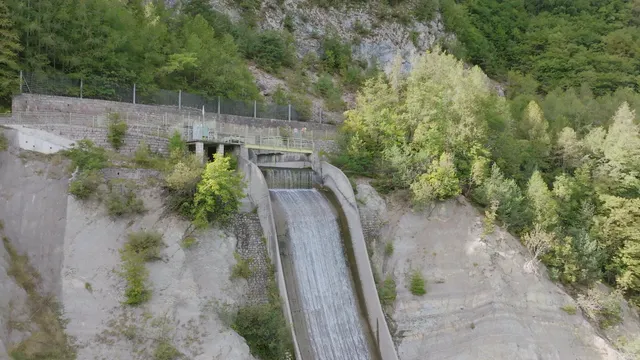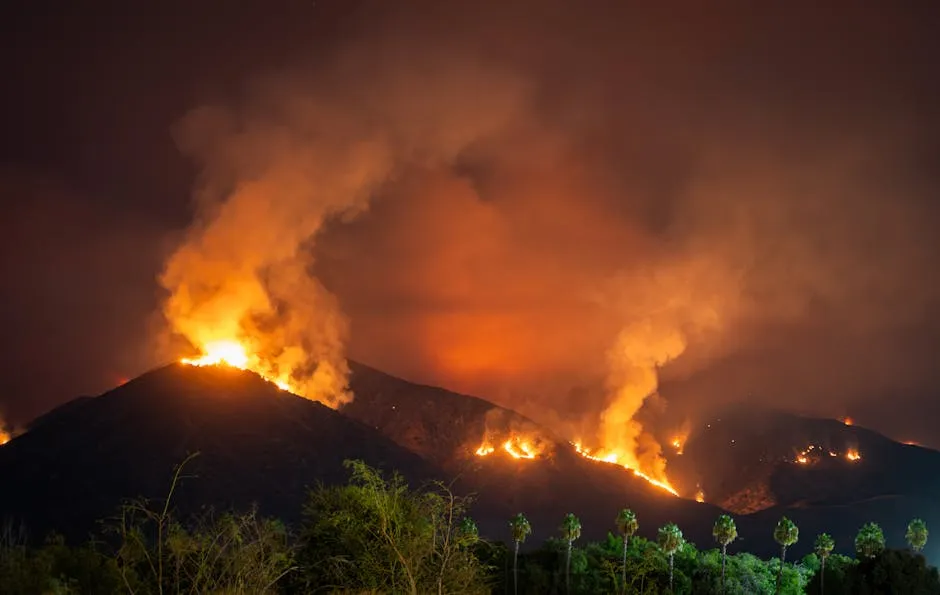Introduction
The U.S. Geological Survey (USGS) plays a vital role in our understanding of Earth sciences. It provides crucial scientific information about natural resources, hazards, and environmental health. Staying informed about USGS news is essential for anyone interested in environmental protection, public safety, and geological changes. This article aims to highlight recent developments and significant findings reported by the USGS.
Speaking of staying informed, why not equip yourself with the latest technology? A smartphone can keep you updated on USGS news and alerts, allowing you to access information on the go! It’s like having a mini research lab in your pocket!

Summary and Overview
The USGS monitors geological activities and natural hazards across the nation. It assesses environmental changes, helping us understand the impact of these events. The agency releases various types of news, including national and state updates, scientific discoveries, and public safety alerts. These findings can shape public policy and influence environmental management strategies.
By regularly accessing USGS news updates, you can stay informed about ongoing research and emerging hazards. Subscribing to their news releases ensures you receive timely information directly related to your interests and needs. You can find various subscription options on the USGS website to keep you updated on vital topics affecting our communities.
And while you’re at it, consider investing in a portable water filter. Staying hydrated is crucial, especially when you’re out exploring nature or responding to emergencies. You never know when clean water will be needed!

Recent Highlights from USGS
Major Findings and Discoveries
The US Geological Survey has recently reported several significant findings that impact our understanding of environmental health and resources.
First up is an alarming study on groundwater contamination. Approximately 71 to 95 million people in the U.S. rely on groundwater affected by PFAS (per- and polyfluoroalkyl substances). These chemicals can lead to serious health risks, making this an urgent public health concern.
You might want to equip your home with a water purifier. This handy device ensures that you and your family have access to clean drinking water, free from harmful contaminants like PFAS. Because who wants to drink toxic soup?

Next, there’s exciting news about lithium resources. Using advanced machine learning techniques, researchers uncovered large lithium potential in Arkansas’s Smackover Formation. Estimates suggest between 5 to 19 million tons of lithium could be available. This could play a key role in the future of renewable energy technologies.
As lithium becomes more vital, consider investing in a rechargeable lithium battery for your gadgets. It’s a smart choice for anyone who wants to reduce waste and keep their devices running longer!

Additionally, urban areas are benefiting from tree cover more than we realized. Recent studies indicate that trees provide a stronger cooling effect in certain cities. This cooling capacity is crucial for climate adaptation, especially during extreme heat events.
For more detailed reports on these findings, consider checking out the USGS resources. They offer extensive information that can help you stay informed.
Natural Hazards and Environmental Monitoring
Recent alerts from the USGS highlight the ongoing monitoring of natural hazards affecting communities nationwide. Earthquake monitoring remains a priority. Recently, a magnitude 6.0 earthquake struck near California, sending tremors throughout Los Angeles. Such events remind us of the vulnerability of our communities.
The USGS is also actively responding to hurricane threats. For instance, Hurricane Milton prompted the deployment of sensors along Florida’s Gulf Coast. These sensors measure impacts and help assess potential risks to coastal areas.
Speaking of preparedness, consider investing in a survival kit. Having one at home ensures you’re ready for anything life throws your way, from hurricanes to unexpected camping trips!

Moreover, landslide mapping has become increasingly important. A recent study revealed that nearly 44% of the U.S. is susceptible to landslides. This mapping provides critical data for preparedness and disaster response strategies.
To keep up with real-time updates on natural hazards, follow USGS. Their alerts can help you stay informed and prepared for potential emergencies.
Innovations in Geological Research
The U.S. Geological Survey (USGS) is embracing cutting-edge technology. These innovations enhance geological research and data collection methods.
One major advancement is the use of machine learning and GIS technology. These tools allow researchers to analyze vast amounts of geological data efficiently. This leads to more accurate predictions and insights about Earth processes.

Speaking of tech, if you’re looking for a reliable GPS device, this is a must-have for outdoor adventures. It ensures you never get lost while exploring the great outdoors!
Recently, USGS updated its land cover databases. These updates provide crucial data on how land use is changing. An annual update ensures that communities can access the latest information. This is vital for urban planning and environmental management.
Satellite imagery plays a key role in monitoring environmental changes. Each year, USGS collects millions of satellite images. In fact, they gather over 3.3 million images annually! These images help track changes in land cover and natural resources.
These technological advancements not only improve research but also benefit communities. Want to learn more about USGS’s technological tools? Check out their resources for detailed information on these innovations.
Featured Stories and Reports
Community Impact Stories
USGS findings directly shape the lives of local communities. Their research influences public health, safety, and awareness.
For instance, studies on groundwater contamination have affected many areas. Communities that rely on contaminated water sources face serious health risks. Awareness of these findings can empower residents to seek safer alternatives.
Another example is the role of USGS data in disaster preparedness. When communities are informed about natural hazards, they can better prepare. This includes understanding earthquake risks or flood zones.
And while you’re at it, why not grab a first aid kit? It’s a practical addition to your home, ensuring you’re ready for minor emergencies while you promote community safety!

Community leaders should harness USGS data for planning. Using this data can enhance safety measures and improve response strategies.
Encourage your local leaders to utilize USGS findings. Together, we can create safer, more informed communities.
Educational Outreach and Resources
The U.S. Geological Survey (USGS) is dedicated to educational outreach. They offer a variety of resources for both the public and researchers. You can find educational materials that cover numerous Earth science topics. Workshops and citizen science programs are also available, making science accessible to everyone.
Citizen science allows you to contribute to real scientific research. Participating in these programs helps gather vital data while promoting public engagement. This involvement is crucial for effective scientific monitoring and research.
Speaking of engaging with science, consider picking up a science experiment kit for your kids! It’s a fun way to spark curiosity and interest in Earth sciences right at home!

Public engagement enhances the quality of scientific data. When more people participate, data collection becomes more comprehensive. This collaborative approach not only enriches scientific understanding but also strengthens community ties.
Are you interested in being part of the science community? Join USGS educational programs today! It’s a fantastic way to learn and make a difference.
Conclusion
Staying informed about USGS news is important for personal and community safety. Their findings advance scientific knowledge and promote environmental stewardship. Regularly checking for updates and engaging with USGS resources can empower you to make informed decisions. Together, let’s support the vital work of USGS in protecting our planet.
FAQs
What types of news does the US Geological Survey release?
The US Geological Survey (USGS) releases a variety of news. You can find updates on natural hazards like earthquakes and floods. Environmental research is another key area, covering topics such as water quality and ecosystem health. Community safety updates also play a significant role. These updates inform the public about potential risks and safety measures.
How can I access USGS news updates?
Accessing USGS news is easy and convenient. You can subscribe to their newsletters directly on the USGS website. They also offer RSS feeds for real-time updates. Using these options ensures you receive the latest information tailored to your interests.
Why is it important to follow USGS findings?
Following USGS findings is crucial for public safety. Their data influences policy-making and environmental conservation efforts. Knowledge from USGS helps communities prepare for natural disasters. It also guides decisions regarding land use and resource management, creating a safer environment for all.
What are PFAS, and why are they a concern?
PFAS stands for per- and polyfluoroalkyl substances. These chemicals are used in various industrial applications and consumer products. Recent USGS studies highlight their persistence in the environment and potential health risks. Exposure to PFAS can lead to serious health issues, making them a significant concern for public health.
How does USGS utilize technology in its research?
USGS employs advanced technologies to enhance its research capabilities. Geographic Information Systems (GIS) help analyze spatial data efficiently. Machine learning techniques are also utilized for predictive modeling in geological studies. These innovations improve the accuracy and reliability of USGS findings.
How can communities benefit from USGS data?
Communities can apply USGS data for local planning and disaster preparedness. Access to geological information aids in understanding risk factors for natural hazards. By utilizing USGS findings, local governments can develop effective response strategies. This proactive approach fosters safer and more resilient communities.
Please let us know what you think about our content by leaving a comment down below!
Thank you for reading till here 🙂
All images from Pexels




